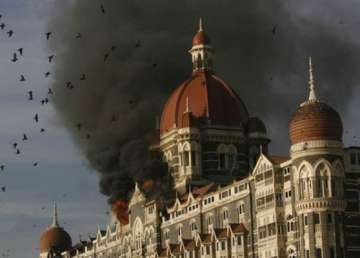New York: Pakistan-based LeT's technology chief had posed as an Indian businessman while negotiating to buy from an American company a Voice-over-Internet Phone service that was later used by the LeT handlers to communicate with 26/11 attackers while concealing their actual origin.
Zarrar Shah, a 30-year-old computer expert, was the technology chief of Lashkar-e-Taiba, and had set up an internet phone system to disguise his location during the 26/11 attacks by routing his calls through New Jersey.
A detailed investigative report by the New York Times, ProPublica and the PBS series 'Frontline' titled 'In 2008 Mumbai Killings, Piles of Spy Data, but an Uncompleted Puzzle,' said that Shah, contacted the New Jersey company, "posing online as an Indian reseller of telephone services named Kharak Singh, purporting to be based in Mumbai."
READ MORE: Seven Mumbai terror attacks accused file bail applications
His Indian persona started haggling over the price of the VoIP that had been chosen because it would make calls between Pakistan and the terrorists in Mumbai appear as if they were originating in Austria and New Jersey, it said.
"Its not first time in my life i am perchasing in this VOIP business," (sic) Shah said in shaky English, to an official with the company when he thought the asking price was too high, according to British intelligence documents quoted in the report. "I am using these services from 2 years."
Shah had set up the VoIP service through the New Jersey company, ensuring that many of his calls to the terrorists would bear the area code 201, concealing their actual origin.
In November 2008 however, the company's owner wrote to the fictitious Indian reseller Singh, complaining that no traffic was running on the digital phone network.
"Dear Sir, I will send traffic by the end of this month," (sic) Shah said in his ominous reply.
In a plan to pin the blame on Indian Muslims for the attacks, Shah had typed a statement of responsibility for the attack from the Hyderabad Deccan Mujahadeen - a fake Indian organization.
Early on November 26, Shah emailed a draft of the phony claim to an underling with orders to send it to the news media later, according to American and Indian counterterrorism officials.
The report described Shah as a 'digitally savvy operative' who had 'strong ties to Pakistani intelligence and an intense hatred for India'.
"As he made his plan, he searched on his laptop for weak communication security in Europe, spent time on a site designed to conceal browsing history, and searched Google News for 'indian american naval exercises' - presumably so the seagoing attackers would not blunder into an overwhelming force," it said.
Latest World News
